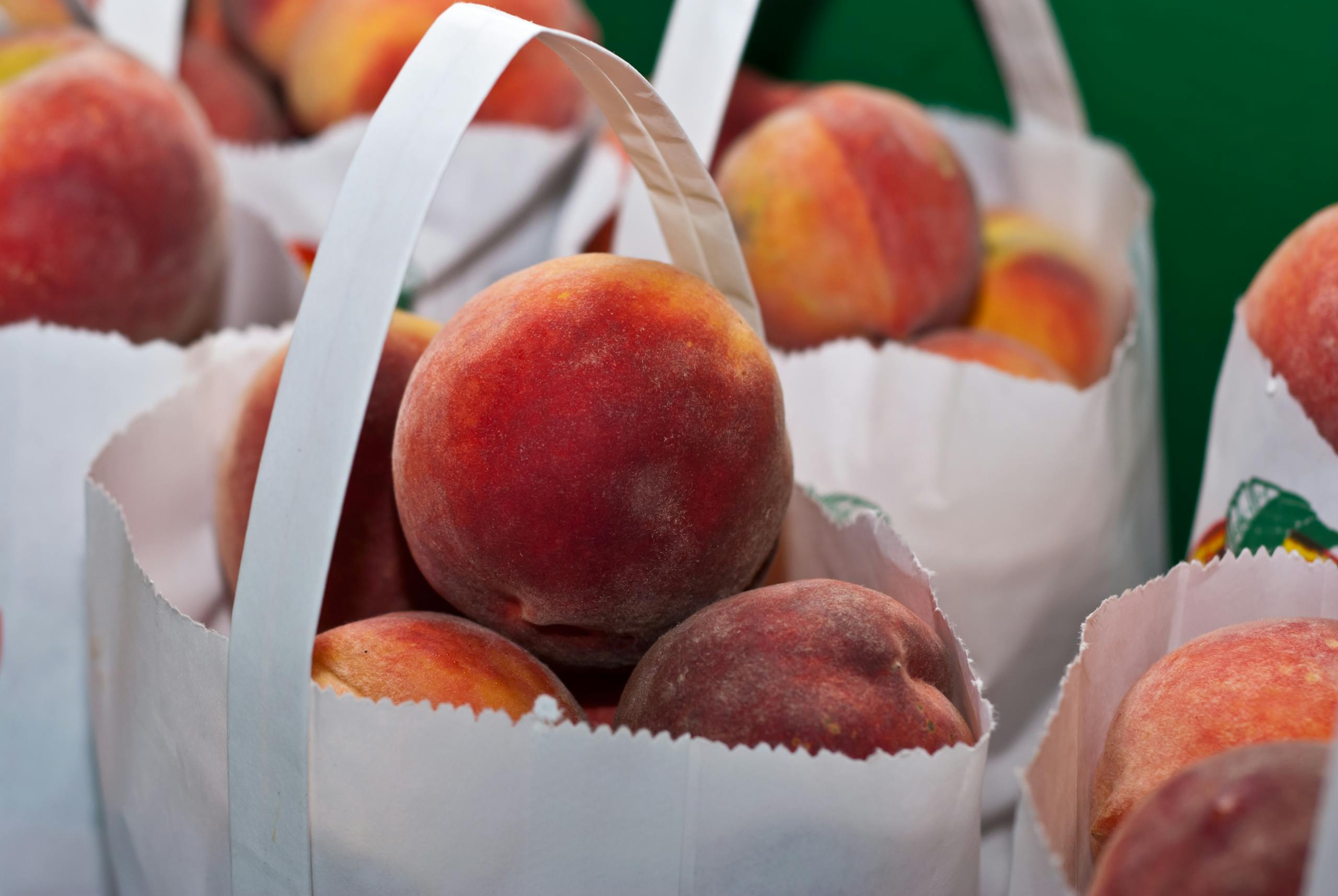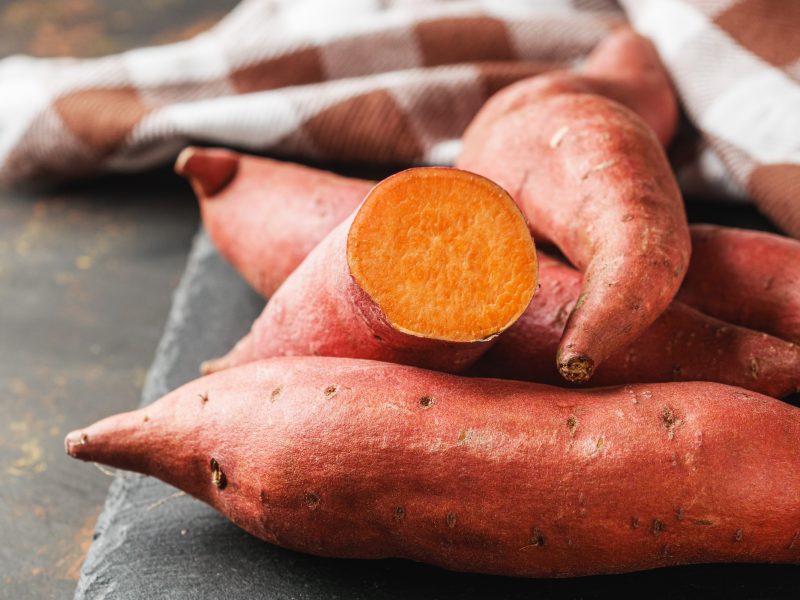Peaches are an indulgently sweet stone fruit whose season never seems to be long enough. They’re so sweet, in fact, that you may be left wondering if peaches are good for you.
Like many fruits, it is important to keep carbs in mind when eating peaches. However, according to registered dietitian Nour Zibdeh, “While peaches may have few extra grams of sugar compared to other fruit, to put it into perspective, it’s much less sugar than you would get from soda, juice, or a few small cookies.”
When eaten in moderation, peaches can make an excellent Paleo dessert or the perfect complement to a savory dish. Read on to learn more about this delicious summer fruit.
How Peaches Are Grown
Peaches originated thousands of years ago in China, where they continue to be cultivated. From China, peaches spread to Persia (Iran) and then to Europe via the Silk Road. Through European colonists, the fruit eventually reached the United States. [1,2]
Peaches thrive in temperate climates and sandy soils with a slightly acidic pH. Pruning is essential to promote healthy growth and high fruit yield. Peach growers prune in late winter to remove dead or diseased wood and encourage the fruit-bearing branches to grow. [3]
Most peach varieties are self-pollinating, so they don’t need another tree to set fruit. However, bees and other insects are crucial for pollinating peach flowers. Having a healthy population of pollinators in the orchard is important for good fruit production.
Peaches are typically harvested in late summer when they reach full size and their skin color changes to a deep, vibrant red orange. Harvesting time can vary depending on the variety and local climate. They’re usually hand-picked to prevent bruising.
Health Benefits of Peaches
Peaches are packed with a variety of nutrients and offer numerous potential health benefits. Many of these benefits come from their antioxidant and inflammation-lowering properties.
Antioxidant Support
Chronic oxidative stress can lead to health conditions and premature aging. [4] Peaches contain antioxidants like beta-carotene and flavonoids. These antioxidants can protect the body from damage caused by free radicals.
Cardiovascular Health
Compounds like flavonoids and carotenoids in peaches have anti-inflammatory effects. Because chronic inflammation contributes to cardiovascular disease, eating anti-inflammatory foods like peaches can be protective. [5,6]
Peaches are also a good source of potassium, a mineral crucial for regulating blood pressure. Consuming adequate potassium to balance sodium may reduce tension in blood vessels. As a result, blood pressure stays within a normal range. [7]
Allergy Support
Eating peaches may reduce allergy symptoms in some people. When triggered by an allergen, immune cells called mast cells release histamine, leading to allergy symptoms. Peach flesh may help stabilize mast cells, keeping them from releasing histamine. [8]
However, it should be noted that some people with grass, birch, and alder pollen allergies may experience an allergic reaction when eating raw peaches, known as oral allergy syndrome.
Support Youthful Skin
Peaches can also support youthful skin. They provide vitamin C for collagen production and antioxidants to protect against free radical damage.
Ceramides are a major component of human skin. Peaches have natural ceramides called glucosylceramides that may improve skin texture and hydration. [9,10]
Protect Against Certain Cancers
Peaches contain chlorogenic acid, a compound with anti-cancer properties. Chlorogenic acid may inhibit the growth of cancer cells and reduce the risk of certain cancers, like liver and breast cancer. [11]
How to Select and Store Peaches
A ripe peach should feel heavy for its size, as the weight indicates juiciness. The color should be a deep, rich yellow or orange with a reddish blush. When ripe, it will yield slightly to pressure but won’t be too soft or mushy. It will also have a sweet, fragrant aroma.
If the peach has little to no scent and is very firm, it may need more time to ripen. To ripen, leave the peach at room temperature for a day or two until it softens slightly. Once ripe, peaches can be stored in the refrigerator for a few days to slow the ripening process. Arrange them in a single layer to avoid bruising. For the best flavor, let refrigerated peaches come to room temperature before eating.
To freeze peaches, peel and slice them, then lay the slices on a baking sheet in a single layer. Freeze until solid, then transfer to a freezer bag. Then they’re available for blending, baking, or grilling.
Prepping and Cooking Peaches
Rinse peaches under cool running water before eating or using them in recipes. Then pat them dry with a clean towel. Use a knife to cut around the peach, following the natural crease, and twist to separate the halves. Then remove the pit, using your fingers or a knife. Slice or dice as needed.
There are two main categories of peaches, based on the difficulty of releasing the pits from the flesh. Freestone peaches have pits that easily separate from the flesh, making them easier to slice. Clingstone peaches are more difficult to pit, as the flesh clings to the stone.
To prevent sliced peaches from browning, toss them with a little lemon juice or lemon water. This step makes it easy to keep them chopped and ready to use in salads and desserts.
References
- Fruit from the Sands [Internet]. Google Books. 2020 [cited 2024 Aug 21]. Available from: https://books.google.com/books?hl=en&lr=&id=pNABEAAAQBAJ&oi=fnd&pg=PA3&ots=E5ZbUazJHB&sig=5wh5jsOPpLx5ZXFKrLqnHA7jZlE#v=onepage&q&f=false
- A History of the New Jersey Peach (Rutgers NJAES) [Internet]. njaes.rutgers.edu. Available from: https://njaes.rutgers.edu/peach/history-statistics/nj-peach-history.php
- Old Farmer’s Almanac. Peaches [Internet]. Old Farmer’s Almanac. 2019. Available from: https://www.almanac.com/plant/peaches
- Ko SH, Choi SW, Ye SK, Cho BL, Kim HS, Chung MH. Comparison of the antioxidant activities of nine different fruits in human plasma. Journal of Medicinal Food [Internet]. 2005;8(1):41–6. Available from: https://pubmed.ncbi.nlm.nih.gov/15857208/
- Li G, Zhu Y, Zhang Y, Lang J, Chen Y, Ling W. Estimated Daily Flavonoid and Stilbene Intake from Fruits, Vegetables, and Nuts and Associations with Lipid Profiles in Chinese Adults. Journal of the Academy of Nutrition and Dietetics. 2013 Jun;113(6):786–94.
- Noratto G, Martino HSD, Simbo S, Byrne D, Mertens-Talcott SU. Consumption of polyphenol-rich peach and plum juice prevents risk factors for obesity-related metabolic disorders and cardiovascular disease in Zucker rats. The Journal of Nutritional Biochemistry [Internet]. 2015 Jun 1 [cited 2023 Feb 8];26(6):633–41. Available from: https://www.sciencedirect.com/science/article/pii/S0955286315000315
- D’Elia L, Iannotta C, Sabino P, Ippolito R. Potassium-rich diet and risk of stroke: Updated meta-analysis. Nutrition, Metabolism and Cardiovascular Diseases. 2014 Jun; 24(6):585–7.
- Shin TY, Park SB, Yoo JS, In Kyeom Kim, Lee HS, Taeg Kyu Kwon, et al. Anti-allergic inflammatory activity of the fruit of Prunus persica: Role of calcium and NF-κB. Food and Chemical Toxicology [Internet]. 2010 Oct 1 [cited 2024 Aug 21];48(10):2797–802. Available from: https://pubmed.ncbi.nlm.nih.gov/20633593/
- Koikeda T, Tokudome Y, Okayasu M, Kobayashi Y, Kuroda K, Yamakawa J, et al. Effects of Peach (Prunus persica)-Derived Glucosylceramide on the Human Skin. Current Medicinal Chemistry [Internet]. 2017 Apr 1;17(1):56–70. Available from: https://www.ncbi.nlm.nih.gov/pmc/articles/PMC5740493/
- Jin K, Higaki Y, Takagi Y, Higuchi K, Yada Y, Kawashima M, et al. Dapsone in lichen planus. Acta Dermato Venereologica [Internet]. 1994 Jul 1 [cited 2024 Aug 21];74(4):334–4. Available from: https://pubmed.ncbi.nlm.nih.gov/7817665/
- Noratto G, Porter W, Byrne D, Cisneros-Zevallos L. Identifying Peach and Plum Polyphenols with Chemopreventive Potential against Estrogen-Independent Breast Cancer Cells. Journal of Agricultural and Food Chemistry. 2009 May 28;57(12):5219–26.


